Sillari: Raghav Kabra ignores the howls of the wild dogs, the bird cries, and the occasional growl of a leopard patrolling Pench Tiger Reserve at night. He is transfixed by the view above—a clear night sky glittering with stars and planets millions of lightyears away. Kabra is among the first to visit the newly declared ‘dark sky park’ at Sillari, Maharashtra, which attracts droves of tourists for its tiger population. Now, villagers and the forest department are ready to welcome another league of tourists—science buffs and amateur astronomers.
The same hushed whispers and awe that the sight of a tiger elicits from tourists are redirected to the night sky. Kabra, 38, can clearly see Saturn’s rings and Jupiter’s mole.
“I’ve gone as far as Ladakh and Rajasthan in search of clear skies for stargazing. But to find something so beautiful right here in Pench is a blessing,” says Kabra, a Nagpur-based businessman with a keen interest in astronomy.
While Hanle in Ladakh has a sanctuary for the dark that was notified by the Indian government in 2022, the one at Pench is the first in India to receive international recognition. On 14 January, the US-based International Dark Sky Association (IDA)—dedicated to preserving night skies around the world—accredited the 741-sq-km Pench Tiger Reserve with the title of dark sky park. Over the years, the IDA has declared around 200 pieces of sky over 22 countries as dark sky reserves, parks, and sanctuaries.
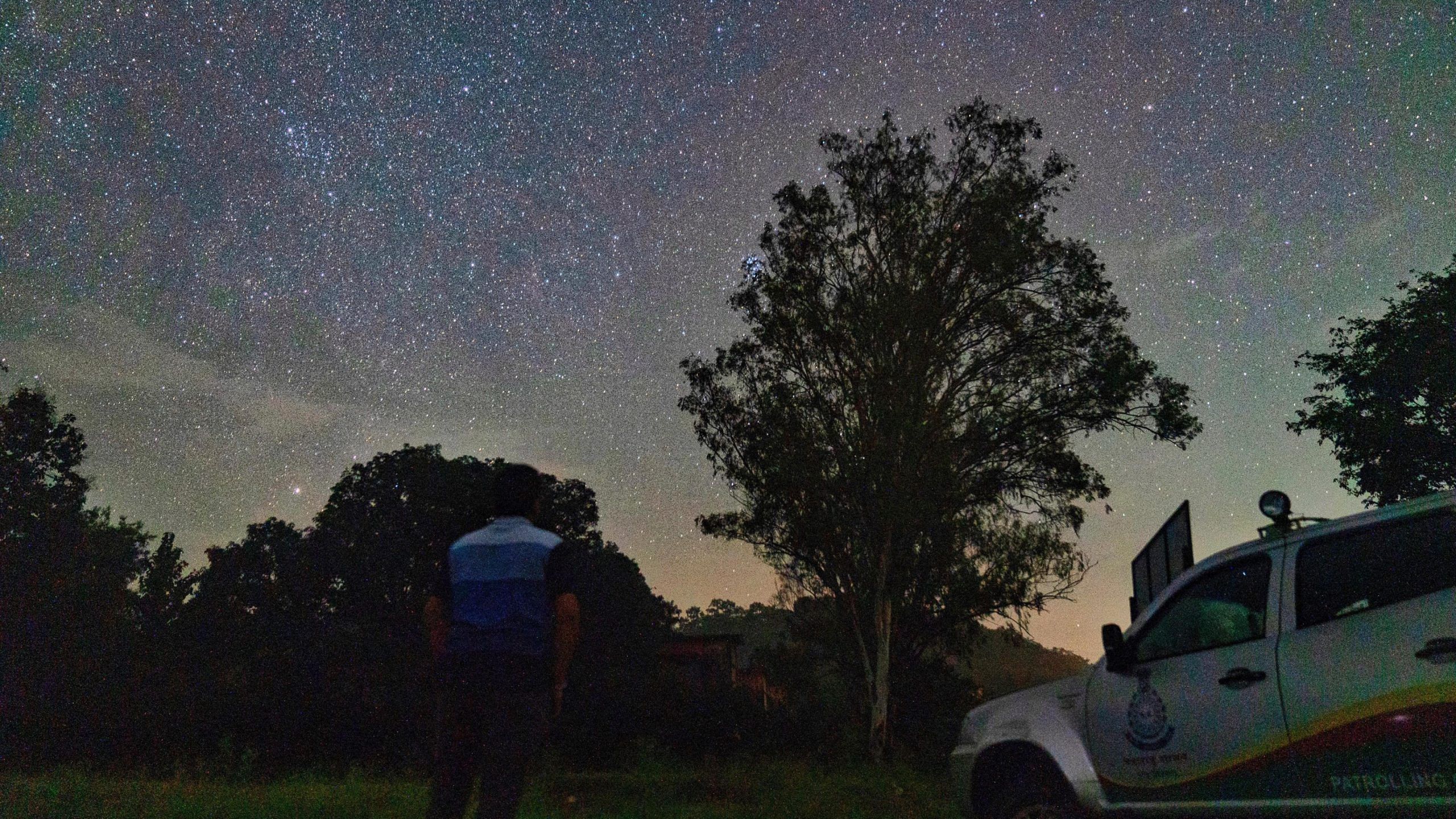
At the Pench Tiger Reserve, everyone is banking on the surge of interest in space exploration after the success of ISRO’s Chandrayaan-III and the Aditya L-1 mission to study the sun.
Once the observatory at Sillari is open to the public, it will be a boost to the local economy—local villagers have already been trained to handle the telescope, and nearby resorts and homestays are expecting a surge in bookings. They will soon be a part of India’s thriving astro-tourism sector, where amateur astronomers, astrophotographers, school children and star-party enthusiasts travel to remote locations in Uttarakhand, Himachal Pradesh, Ladakh and the Andamans in pursuit of the night sky.
The Pench Tiger Reserve straddles the border between Madhya Pradesh and Maharashtra, forming a trio with the Tadoba and Kanha Tiger Reserves nearby. Compared to the other two reserves, which have 93 and 500 tigers respectively, Pench has relatively fewer tigers—around 44—in its core region. But the dark sky park can make Pench shine brighter among its counterparts.
“This will give them a reason to stay overnight at the reserve, it might boost the revenue of nearby hotels in Sillari,” said Jayesh Tayade, a range officer at Pench.
And it all began with a 22-year-old amateur astronomer, a small telescope, a germ of an idea and an enthusiastic forest official.
Also read: Astro labs are the new wave in UP village schools. Delhi man revolutionising physics
Residents are ready
The observatory, a four-storey, 30-foot tall watchtower that was built in just three months last year, will soon be opened to the public—the forest department is hammering out last-minute logistics details, rates and timings. The top floor houses a new Celestron telescope, covered by an awning that slides open to reveal the sky.
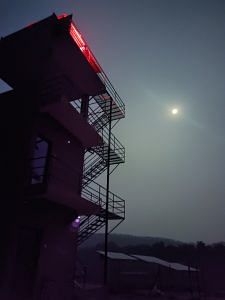
Tayade reveals that only residents will be trained to work at the observatory – be it as caretakers, guides or Gypsy drivers. “If anyone should benefit from the tourism here, it should be the people who have kept it pristine for so long,” he says.
Training has already begun. Today, forest guard Mukesh Sontakke (23) knows the coordinates for Sirius, the brightest star in the sky. He can mount and adjust the telescope by aligning it toward the pole star. He can identify constellations and capture images through the telescope lens.

Sontakke, along with fellow guard Pratik Shivne (22), would observe the night sky on patrols inside Pench Tiger Reserve. But until December 2023, he knew little about the bright stars that kept him company. His learning journey only began when the new computerised Celestron telescope arrived at the Sillari watch tower.
Shivne, too, became intrigued upon learning about the proposed observatory, and snuck off to the tower without telling his boss.
“I wanted to see the telescope being installed. We’ve grown up seeing the sky and the stars, but the observatory promised so much more. I wanted to know what,” reveals Shivne.
Shivne was one of the first to volunteer when the forest department opened applications for people to work at the observatory. He spent the better part of January at an astronomy training programme – learning all about operating the telescope and recognizing important stars, clusters, and planets.
Now, Sontakke and Shivne are part of the dark sky task force, ready to welcome tourists to their new observatory. They patrol the forest from morning till sunset, post which they make their way to the watchtower, where they sometimes stay till 2-3 AM.
As dark sky guides, their job will involve taking care of the tourists visiting the observatory, and ensuring they have a fulfilling experience of the night sky. The pilot visit by Kabra and others from Nagpur was Shivne’s first test.
“It went like clockwork despite my nervousness. I aligned the telescope on my first try and even answered most of the questions they had after the demonstration,” Shivne says.
Also read:
A homegrown movement
For software engineer and astronomy enthusiast Abhishek Pawse (22) the observatory, the telescope, the willingness of villagers to make small sacrifices, and the international accreditation are examples of how a homegrown movement can become something big— the fruition of an idea that struck him five years ago.
He was walking near Sillari village in the buffer zone of Pench Tiger Reserve, when he looked up at the night sky. Growing up in Nagpur, a trip to the Pench Tiger Reserve was a regular weekend outing, but it was the first time the software engineer marveled at how pristine the sky was there. This was in 2019, when Pawse was 18 years old.
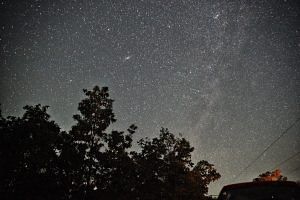
Situated 70 km away from Nagpur city, Sillari village was not polluted by light.
“When you see something that beautiful, your first thought is to protect it,” said Pawse, a member of Nagpur’s Dhruva Skywatchers Association, a 50-strong group of amateur astronomers.
The group had already installed a small telescope for public use at the forest department’s tourism complex in Sillari. But that night, four years ago, Pawse, was compelled to do something more for the long-term protection of the region. At the time, he was a volunteer with the IDA and was aware of the importance of dark sky sanctuaries.
He approached the deputy director of Pench Tiger Reserve, Prabhu Nath Shukla, to convince him about the importance of conserving the night sky.
“Turns out, Shukla sir didn’t need much convincing and readily agreed to take the necessary measures,” says Pawse with a grin.
In 2021, the Pench Forest Department entered into a Memorandum of Understanding with Pawse to begin efforts toward getting Sillari certified by the IDA. The main conditions for certification include a Light Quality Index of 21 or higher on the Bortle scale, which measures the night sky’s brightness in a particular location.
To get the right score, the Sillari area plunged itself into relative darkness to meet the guidelines and reduce light pollution. More than a hundred streetlights in four surrounding villages — Khapa, Wagholi, Sillari, and Pipariya—were modified to point toward the ground. This way, the light would not scatter upward and pollute the brightness of the sky.
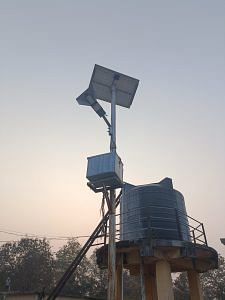
The street light colours were also changed from white to warm yellow. Pawse explains that yellow light has a shorter wavelength and scatters less in the atmosphere. The LQI at the dark sky park is currently at 21.4, which is good enough for the IDA.
Forest officials also started changing streetlights, and monitoring the light quality index. At first, the villagers were wary of the changes, but once word spread of what they were trying to achieve, everyone became invested.
“The core area was already protected from light pollution, and all these changes in the buffer zone are only a way to conserve the environment better. The night sky is as much an asset as the forests and wildlife. As a national park, it’s our duty to protect it,” says deputy director Prabhu Nath Shukla.
Also read:
The next Hanle?
The observatory at Pench isn’t as imposing as the massive Indian Astronomical Observatory in Hanle, which sits in the western Himalayas at a height of 14,764 feet. It’s one of the highest observatories in the world, but Shukla and Pawse are optimistic about the Pench dark sky park’s success—they’ve already started getting inquiries. Getting to Hanle requires time and people have to acclimatise to the elevation to avoid altitude sickness.
“I want my kids to learn about astronomy from a young age. But I was worried about the health conditions needed to travel to Hanle, not to mention the cost itself,” said Ajinkya Barhate, a software engineer from Pune. But when he read about Pench being accredited as a dark sky park, he changed the destination he had in mind for the trip.
To make it easier for tourists to access, forest officials deliberately chose to place the observatory in the buffer area of the jungle rather than the core. A simple chain link fence around the watchtower serves to keep the animals away.
Sontakke can’t stop telling people back home in Pipariya, one of the buffer villages where the lights were modified, about his new job. He took his friends from his village up to the watchtower one night to demonstrate what he had learned.
“Everyone was just as interested as me. We never had the means to learn about astronomy first-hand, but that doesn’t mean we’re not interested in it.”
(Edited by Zoya Bhatti)


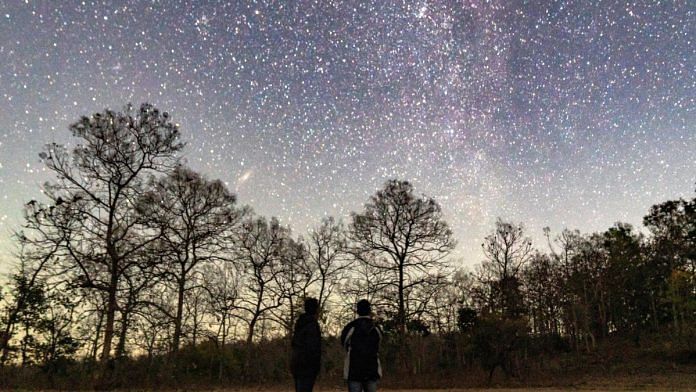


Great. Hope the powers who decide on such matters develop such dark sky park jn every district/ state in India
Something uncommon,wildlife & nature lovers think about.
Matter of pride for Nagpurians.
Beautiful Click of night sky.
Kudos to ‘Dark sky association ‘& Pench Forest Division.